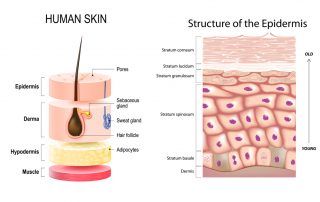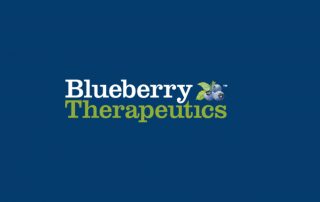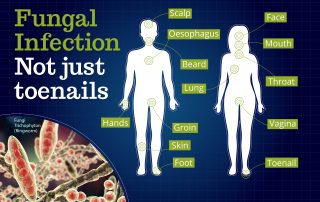Getting under your skin: how a fungus takes hold
Written by Heather Davies-Strickleton, Senior Analytical Scientist
We are not alone in this world. Although we can’t see them, we share our surroundings with billions of tiny microscopic organisms (microbes). Like us, they’re looking for a cosy place to live, survive and thrive. And the place that many of them like to call home is actually us – the human body! While many of these microbes help us, there are some that we could just live without.
Not such a fun guy to have around is a type of microbe called a dermatophyte (from Greek δέρμα derma (skin) and φυτόν phyton “plant”). Dermatophytes are filamentous fungi in the genera of Trichophyton, Microsporum and Epidermophyton, which can invade our skin, hair and nail to cause irritating, highly-infectious rashes (e.g. ringworm and Athlete’s foot), hair loss (e.g. ringworm of the scalp) and flaky, discoloured nails (e.g. fungal nail disease).1
Dermatophytes achieve this because they live off keratin – the tough, fibrous protein important for the structure of skin, hair and nails.1 Within our skin, keratin-making cells are present in the upper layers (the epidermis) and travel upwards over time, becoming rough, dry and flaky, and producing a “dead” layer of cells (called the stratum corneum), which acts as a constantly renewing barrier to the outside world.2 Fortunately, under normal, healthy conditions, this top skin layer is dry and not easily invaded by dermatophytes.
However, the scales can easily be tipped in the favour of fungal growth. Dermatophytes particularly love warm, moist environments, which are often created in our active lifestyles.1 Getting sweaty and […]

